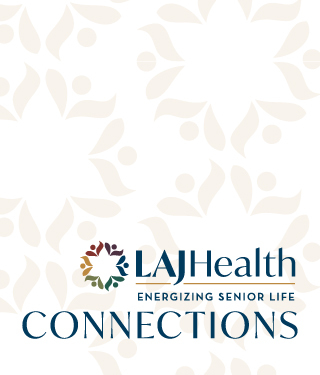A Generation Apart


A Generation Apart
In 1983 a documentary was made entitled “A Generation Apart,” which explored the impact of the Holocaust on the survivors’ families. It was described as a “testimony to the power of love.” Over 30 years later, as I walked through the Los Angeles Jewish Home’s Eisenberg Village, I witnessed another testimony to the power of love related to the Shoah. A small group of the Holocaust survivors who live at the Jewish Home were meeting.
The group was led by resident Ernest Braunstein. Although I had only been CMO at the Home for a few weeks, I knew several of the participants. One was even from my mother’s city of Lodz, Poland. He and his wife are now my patients. Their daughter was also participating in the group discussion.
The number of living Holocaust survivors is dropping dramatically. Resident survivors of the Home may number less than 20 in a community of 1000.
The deaths they once barely escaped are now palpably close again, and they react to that in different ways. Some exude their exuberance for just being alive, and a few live in a perpetual fog of fear. In others their paranoia is paramount, and in many the guilt of survival continues to germinate.
Author Jane Gross quoted Rabbi Simon Hirschhorn in an article published Oct. 23, 2014 in The New Old Age. “Some of the elderly survivors cry inconsolably but wordlessly, incapable or unwilling to articulate anything about the past. Others, often dry-eyed, incessantly discuss the terrible things they saw and had to do to save their lives. And they often flip, all but overnight, from one way of coping to the other as the end of life approaches.”
In senior communities around the world that have a significant number of survivors, support groups try to help them cope. One challenge the facilitators face is that many survivors have spent their entire lives not talking about their psychological pain and are not going to “open up” as the facilitators encourage them to do.
Regardless of the town they came from or the camp they were in, Shoah survivors are not like other aged residents in senior living. They are truly a generation apart.
The survivors’ adult children, like myself, are also unlike their generation. We are also a generation apart. In Gross’s article, Rabbi Hirschhorn, who is the son and grandson of survivors and is a nursing home clergy, said survivors’ children struggle more than others with the guilt of placing a parent in an institutional setting.
According to Rabbi Hirschhorn, survivors’ children, often called Second Generation or “2G” for short, “grow up, from the time they are little, with the unconscious wish to make it better, to take away the pain.’’ Both my wife’s parents and my parents were survivors of the Shoah, and we also had the desire not to add any pain to our parents’ lives by our decisions. We, like Charlotte Dell in the article by Gross, always had “an overwhelming feeling of responsibility that there is no additional suffering.’’
Staff that care for survivors and their adult children have a significant task to guide these families through what is likely the most difficult transition of their lives.
Perhaps the most challenging medical issue adult children struggle with is whether or not to consent to a feeding tube when their parent can no longer safely eat. Many encouraged by their clinicians choose to have a feeding tube placed. I once overheard a doctor yell at a daughter of a patient with advanced dementia, “You don’t want your Mother to starve to death, do you?” In addition to the bias of some doctors, survivors and their surrogates typically choose any medical interventions that have the goal to prolong life. Unfortunately, what this daughter was not told, and what many children struggling with this decision are not told, is that placing a feeding tube typically means their parent will not be allowed to eat ever again. In addition, numerous medical studies have shown feeding tubes in patients with advanced dementia may increase pain, and often worsen the quality and length of life.
The struggle around whether or not to place a feeding tube is even more challenging for second generation. They wonder whether their action may actually cause additional suffering to their survivor parent by triggering the painful memories of the starvation they had in the war. Since they are not allowed to eat after placement of the tube, it also takes away the basic physical pleasure of eating that is so important because it had been previously denied to them. Not allowing a survivor to eat also creates tremendous guilt in their children. One of my 2G friends told me when they declined having the feeding tube placed in their dad, it felt like they had put on the black uniform of a SS soldier.
I was thinking about the various challenges of caring for aging Holocaust survivors as I watched the small group gathered around a table in the Zuckerman Board Room at the Jewish Home. Thankfully, those thoughts quickly left and were amazingly replaced by the warmth, love, and friendship that were evident. I saw in their eyes and heard in their strong voices that this group was different than one seen in typical nursing homes. It was full of hope. I am looking forward to the next time I have a chance to sit down with them, listen, and hopefully help bring the generations together.